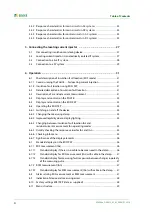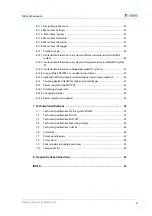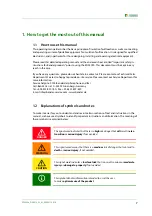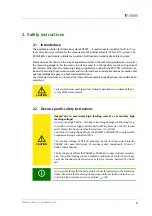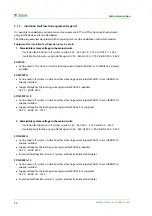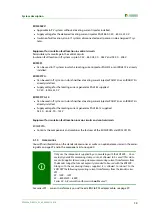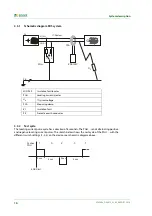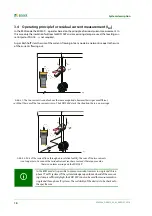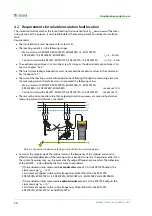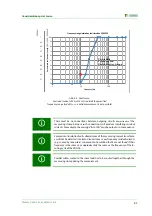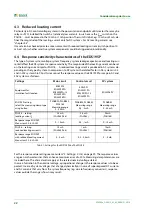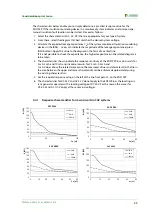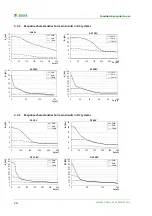
9
EDS309x_D00012_03_M_XXEN/11.2014
2. Safety instructions
2.1 Intended use
The portable insulation fault location system EDS309… is used to locate insulation faults in IT sys-
tems. All variants are suitable for the measurement of residual currents in TN and TT systems. The
EDS3096PG is particularly suitable for insulation fault location in electrically isolated systems.
Please observe the limits on the area of application stated in the technical specifications, as well as
the measuring categories for the measuring clamps used. If, in the specific case, measuring current
transformers other than the measuring clamps supplied are used with the EDS195P, attention is to
be paid to ensuring the connection wires and transformer have an adequate nominal insulation volt-
age (overvoltage category, see Technical specifications)
Use which deviates from or is beyond the scope of these technical specifications is considered non-
compliant.
2.2 Device-specific safety instructions
System interference and high system leakage capacitances can degrade the ac-
curacy of the measurement.
Hazard due to excessively high locating current or excessively high
locating voltage!
An excessively high PGH18… locating current may damage sensitive loads (e.g.
in control circuits) or trigger unintended switching processes. For this reason
select a lower locating current for these systems (1 or 10 mA).
For instance it is only allowed to use the EDS3091 or EDS3091PG in systems with
programmable logic controllers (PLCs).
The locating voltage of DC 50 V produced by the locating current injector
PGH186 can cause interference at sensitive system components. In case of
doubt, contact Bender.
The locating current from the PGH185 or PGH186 can cause residual current de-
vices to trip. The locating current is limited to maximum 25 mA (or 10 mA), how-
ever 30 mA residual current devices may trip, for instance, between 15 and 30
mA.
It is necessary to aim for the best possible conductor symmetry in the measuring
clamp. Otherwise the measuring clamp may go into saturation due to an exces-
sively high load current and cause an alarm I
Δ
n
>10A.
CAUTION
CAUTION
Summary of Contents for EDS3090
Page 6: ...Table of Contents 6 EDS309x_D00012_03_M_XXEN 11 2014...
Page 26: ...Considerations prior to use 26 EDS309x_D00012_03_M_XXEN 11 2014...
Page 62: ...Frequently Asked Questions 62 EDS309x_D00012_03_M_XXEN 11 2014...
Page 65: ......
Page 66: ......
Page 67: ......




